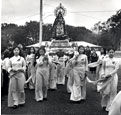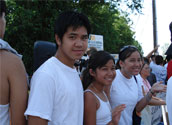Versailles? In New Orleans East?

The name “Versailles” refers to “Versailles Arms Apartment,” the New Orleans East public housing project where a tight-knit group of Vietnamese refugees was first resettled in 1975. The refugees have fled their homes twice already in their life time—first from North to South Vietnam to escape communist persecution in 1957, and then to New Orleans from the war in 1975. Grateful to find peace on the easternmost edge of New Orleans, residents plant vegetables along the bayous and attend mass on Sundays.
Thirty years after their arrival, Versailles is at a crossroads. Now a thriving working-class enclave of 8,000, the community has accomplished material success, but is unsure about its identity. The elders look at their American-born, hip-hop-loving grandkids with suspicion, questioning the cultural allegiance of the youth and fearful of them moving away and leaving the community behind. The youth, on the other hand, dismisses the elders as out-of-touch and yet is frustrated by the lack of trust from the Viet-speaking older generations. Legally citizens of the US, but uncomfortable being American, Versailles residents are perpetual outsiders in the city of New Orleans, largely ignored by the government. All of this, of course, is about to change.

Exiled for the third time

 The flood following Hurricane Katrina devastates New Orleans in August 2005. Most residents evacuate Versailles, but 400 stay behind. Trapped after the levees break, the residents are transported to the living nightmare that is the New Orleans Convention Center, and then dispersed across the country after evacuation. Some are taken in by relatives, and others are placed in Katrina shelters where they rely on inadequate translation help to navigate through the massive FEMA red tape. Forced out of Vietnam by the war thirty years prior, many of them wonder why their homes are being taken away from them once again.
The flood following Hurricane Katrina devastates New Orleans in August 2005. Most residents evacuate Versailles, but 400 stay behind. Trapped after the levees break, the residents are transported to the living nightmare that is the New Orleans Convention Center, and then dispersed across the country after evacuation. Some are taken in by relatives, and others are placed in Katrina shelters where they rely on inadequate translation help to navigate through the massive FEMA red tape. Forced out of Vietnam by the war thirty years prior, many of them wonder why their homes are being taken away from them once again.
Six weeks after the flood. Residents are allowed to return to “look and leave,” but they do not leave. By day, the group fixes their homes, then drives 30 miles to the west side of the city where flood damage is minimal to sleep on the floor of the church there. Help from the outside arrives, too, mostly from idealistic young Vietnamese-Americans. Shortly after the initial group’s return, Father Vien calls the community to come back for mass. People come back, and they stay. 300 attend the first mass. 800 the next Sunday. On the third week, the church extends an invitation to the rest of New Orleans East and packs in 2200. “People are back,” the word of mouth spreads. “The priests are back. We’d better get back.” Friends and family finance much of the rebuilding, without help from FEMA. By January ‘06, while the rest of New Orleans is just recovering from the shock of the flood, over half of the Versailles neighborhood has returned.

Putting up one heck of a fight

The community leaders take the initiative to put together an ambitious redevelopment plan for Versailles, including its own senior housing, a cultural center, and a community farm and market. At its Lunar New Year Festival in February ’06, the community proudly unveils the development plan, but a challenge arrives to spoil the celebration. Mayor Ray Nagin exercises his emergency power to open Chef Menteur Landfill less than two miles from Versailles for toxic Katrina debris disposal, without an environmental impact study, without protective lining on the bottom of the dump, and literally next to the body of water that flooded the community in the first place.
 Outraged, Versailles fights back. Residents crowd the public hearings by the hundreds, making the Vietnamese presence felt in the city for the first time. Legal battles are waged at the state and federal level. A demonstration at City Hall prompts Mayor Nagin to promise that dumping will be suspended until tests are done to ensure the safety of the dumpsite, but he does not keep that promise. Tired of being passed around, the community goes for broke, staging a protest at the landfill to shut it down.
Outraged, Versailles fights back. Residents crowd the public hearings by the hundreds, making the Vietnamese presence felt in the city for the first time. Legal battles are waged at the state and federal level. A demonstration at City Hall prompts Mayor Nagin to promise that dumping will be suspended until tests are done to ensure the safety of the dumpsite, but he does not keep that promise. Tired of being passed around, the community goes for broke, staging a protest at the landfill to shut it down.
At the protest, old and young fight side by side, chanting in English and Vietnamese. They turn away dump trucks; they speak passionately for all the world to hear. Mayor Nagin backs down and shuts down the landfill. The community is finally heard.

We are back, and better than ever

Versailles residents now have a new sense of identity and pride. Their determined drive to return and rebuild has inspired and empowered other New Orleanians to do the same, and their impressive victory against the Chef Menteur Landfill has won them a political voice that can no longer be ignored. As the community celebrates the Lunar New Year once again, Father Vien speaks with pride. “Now, no one would dare speak about rebuilding New Orleans without mentioning our community, because they know we are back. They know we are here.” Once upon a time, the Versailles clan was known as the quiet Vietnamese refugees way out east of the City. Now, they are New Orleanians. They are Vietnamese-Americans.
Since their transformative landfill fight, the Versailles community has established a community development organization (MQVN-CDC) to carry out their redevelopment plans. Two medical clinics and a charter school have opened just in this past year, serving the entire New Orleans East community. Versailles youth has also formed their own group (VAYLA-NO), organizing neighborhood clean-ups, maintaining a youth community center, and training young people to do media activism. In 2008, Anh “Joseph” Cao, scored an upset victory over 9-term incumbent William Jefferson to become the first ever Vietnamese-American US Congressman—an expression of the abundant goodwill from the larger New Orleans community and an unmistakable sign that their voice is being heard louder than ever.

Stream on Vimeo
Best for Individual Users for personal viewing.
Stream on Kanopy
Best for Library Card Holders or University Students and Staff for personal viewing.
Buy on New Day Films
Best for Institutional Users for public screening purposes.
